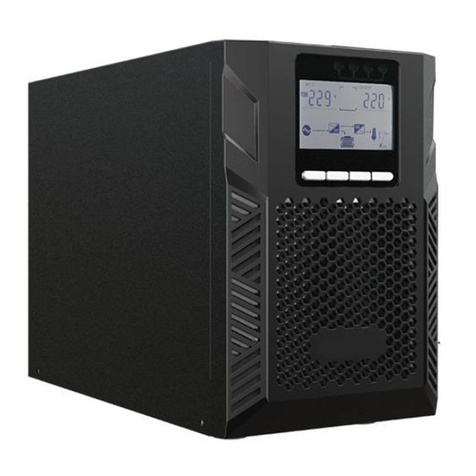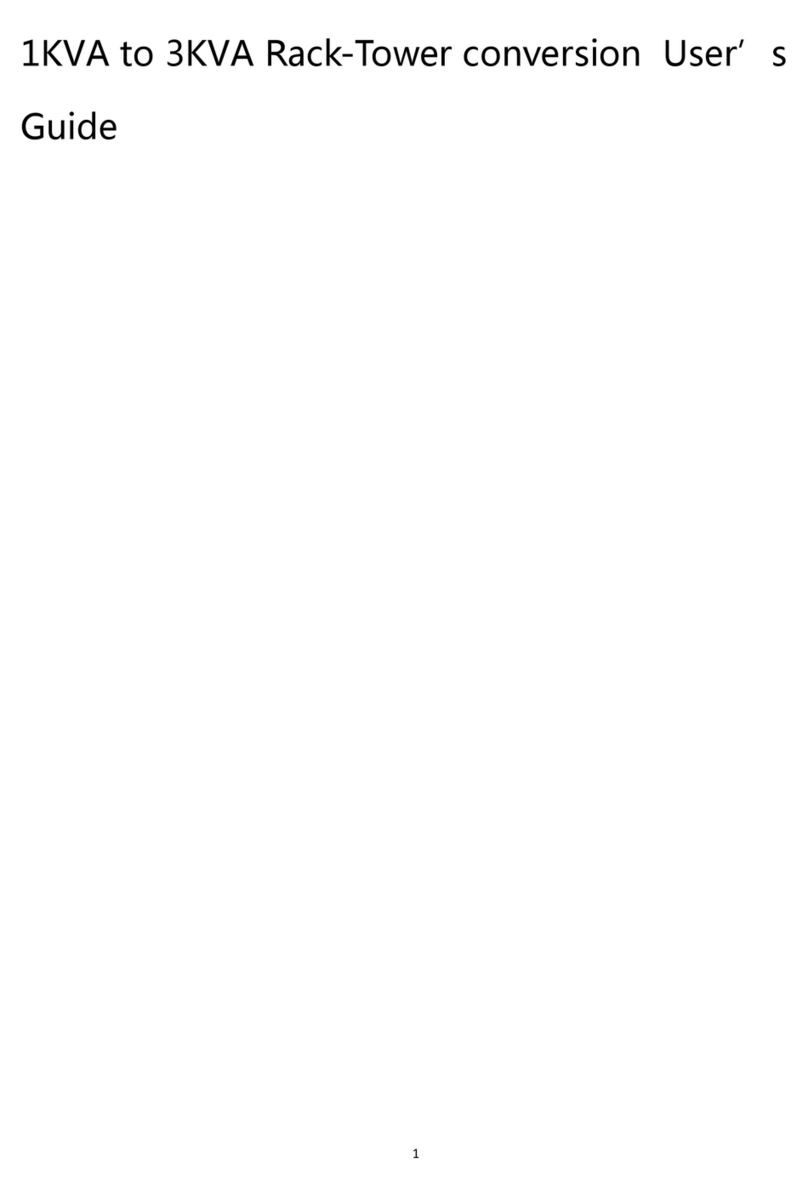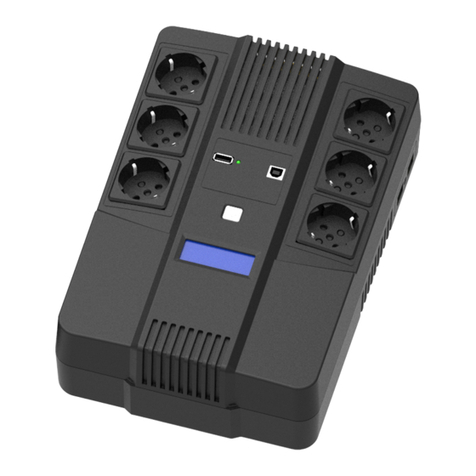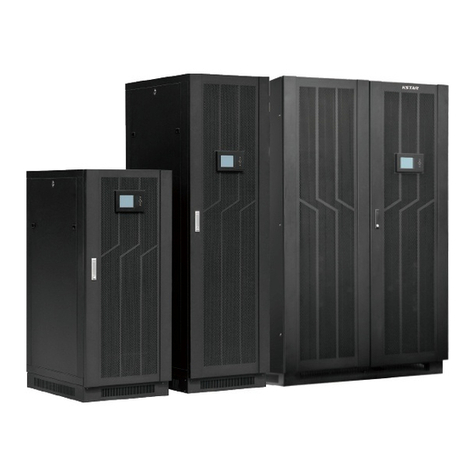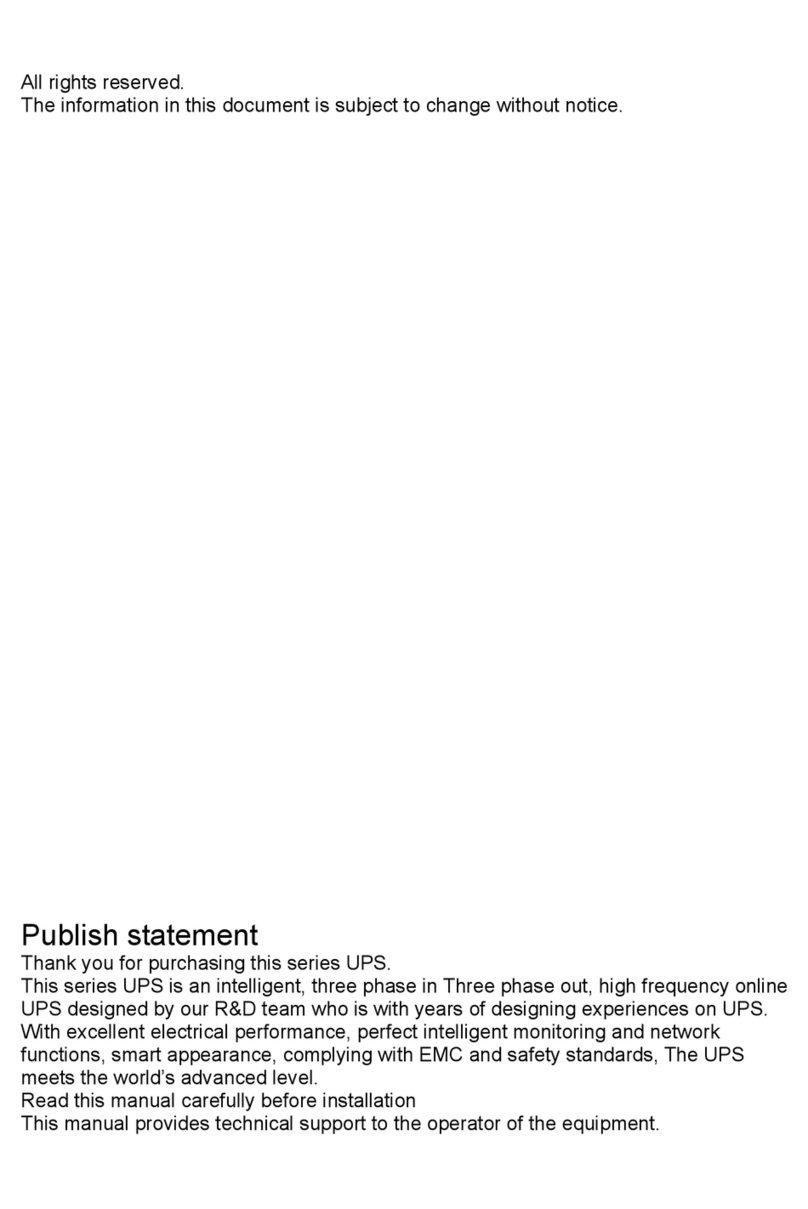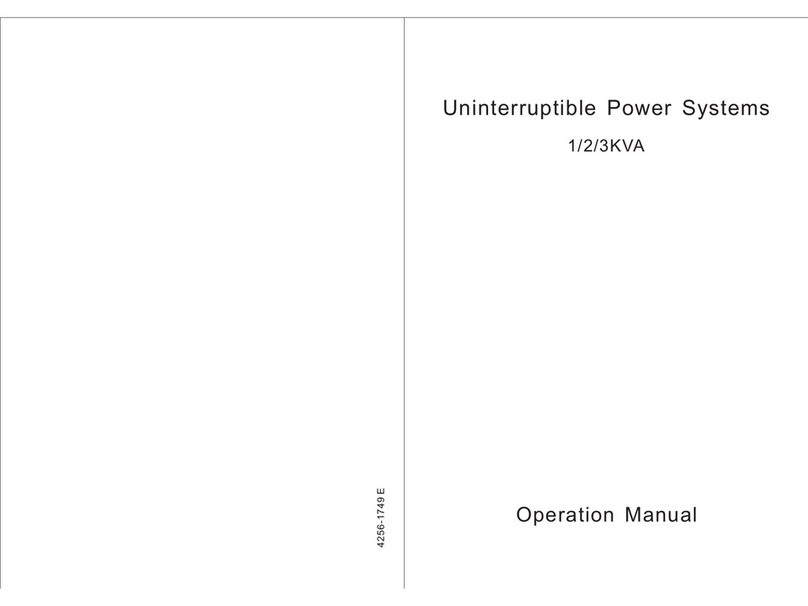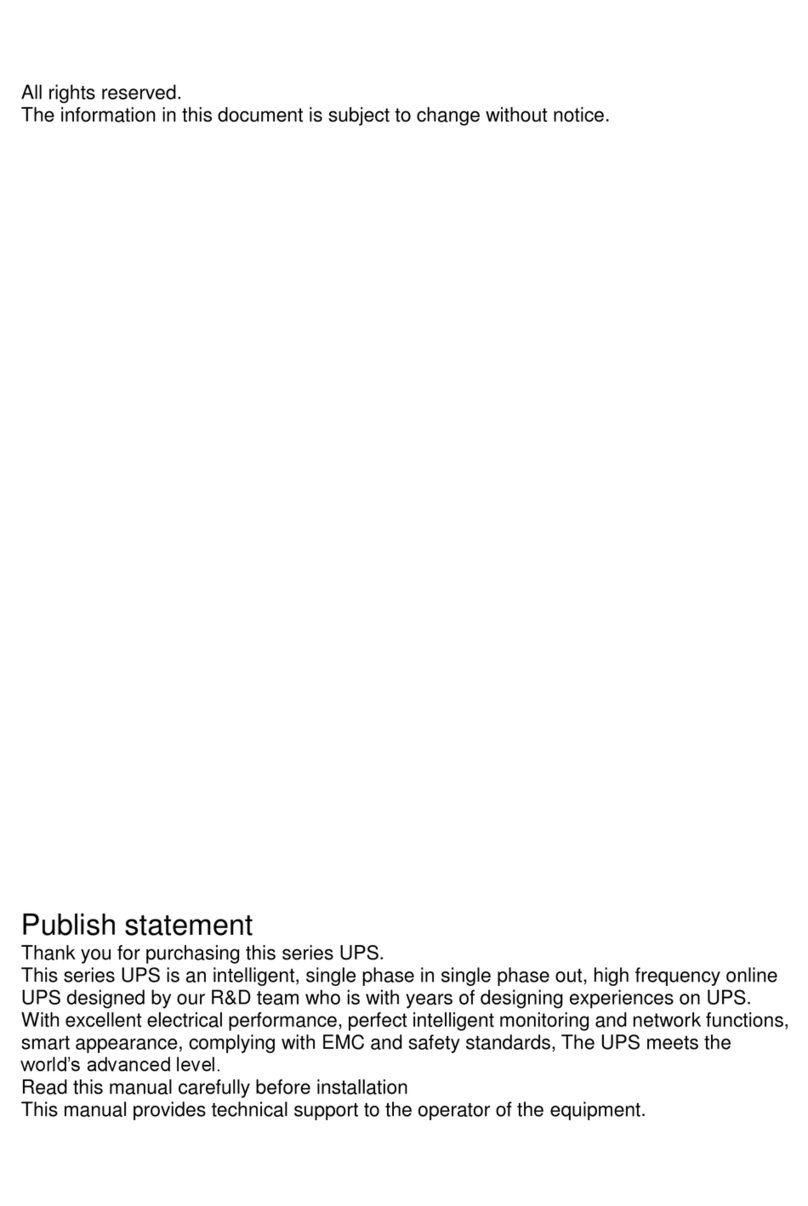
3
2.Main Features
2.1 Summarization
Our UPS is a kind of three-in-single -out high frequency online UPS, it provides four
specifications: The 20KVA;30KVA;50KVA and 100KVA. The products are modularized and adopt
the N+X redundancy. It can flexibly increase the number of the UPS modules according to the
load capacity which is convenient for flexible allocation and gradually investment.
The UPS can solve most of the power supply problems, such as blackout, over-voltage,
under-voltage, voltage sudden drop, oscillating of decreasing extent, high voltage pulse, voltage
fluctuation, surge, inrush current, harmonic distortion (THD), noise interference, frequency
fluctuation, etc..
This UPS can be applied to different applications from computer device, automatic equipment,
communication system to industry equipment.
2.2 Functions and Features
◆Digital control
◆19-inch standard cabinet
1.4-meter and 2-meter high cabinets are provided according to the user’s requirement.
◆Modularized design
◆High power-density design
The height of the single module is 3U, a standard 1.4m cabinet can hold 5 pieces of modules
(we provide 4KVA/6KVA and 10KVA modules), so the whole capacity of each 1.4M cabinet can
reach 50KVA as maximum and vice versa, so the 2M cabinet for 10 modles can reach max.
100KVA.
◆N+X parallel redundancy
This series UPS adopts N+X parallel redundancy design, user can set different redundancy
according to the importance of the load. While the redundancy modules are set more than two,
the availability of UPS system will achieve 99.999%, which may satisfy the required reliability of
the critical load connected. Through LCD display setting, you may configure the required
quantity of the redundancy unit. When the load connected is over the number of the
redundancy, the UPS will alert right away. The design of the MTBF(Meantime before Failure) is
up to 250,000 hours.
This series can set the number of redundancy modules. When the load exceeds the
redundancy setting,The UPS can still work normally and simultaneously send out corresponding
warning as long as the load doesn’t exceed the total capacity of modules.
◆Parallel Redundant control system
◆Optimizing distributed convergence for the cabinet
◆Separated Bypass
◆Common Battery
◆Configuable Battery Voltage (16-20pcs)
◆Automatic charge current adjustment according to battery capacity connected.
◆3-Stage Intelligent charging
◆Touch-screen Super-large LCD display(Optional)
◆Each module with indiviaul LCD display
◆Remote Monitoring via SNMP
◆Optional Accessories available such as Isolation transformer, Distribution Panel, SNMP Card,
